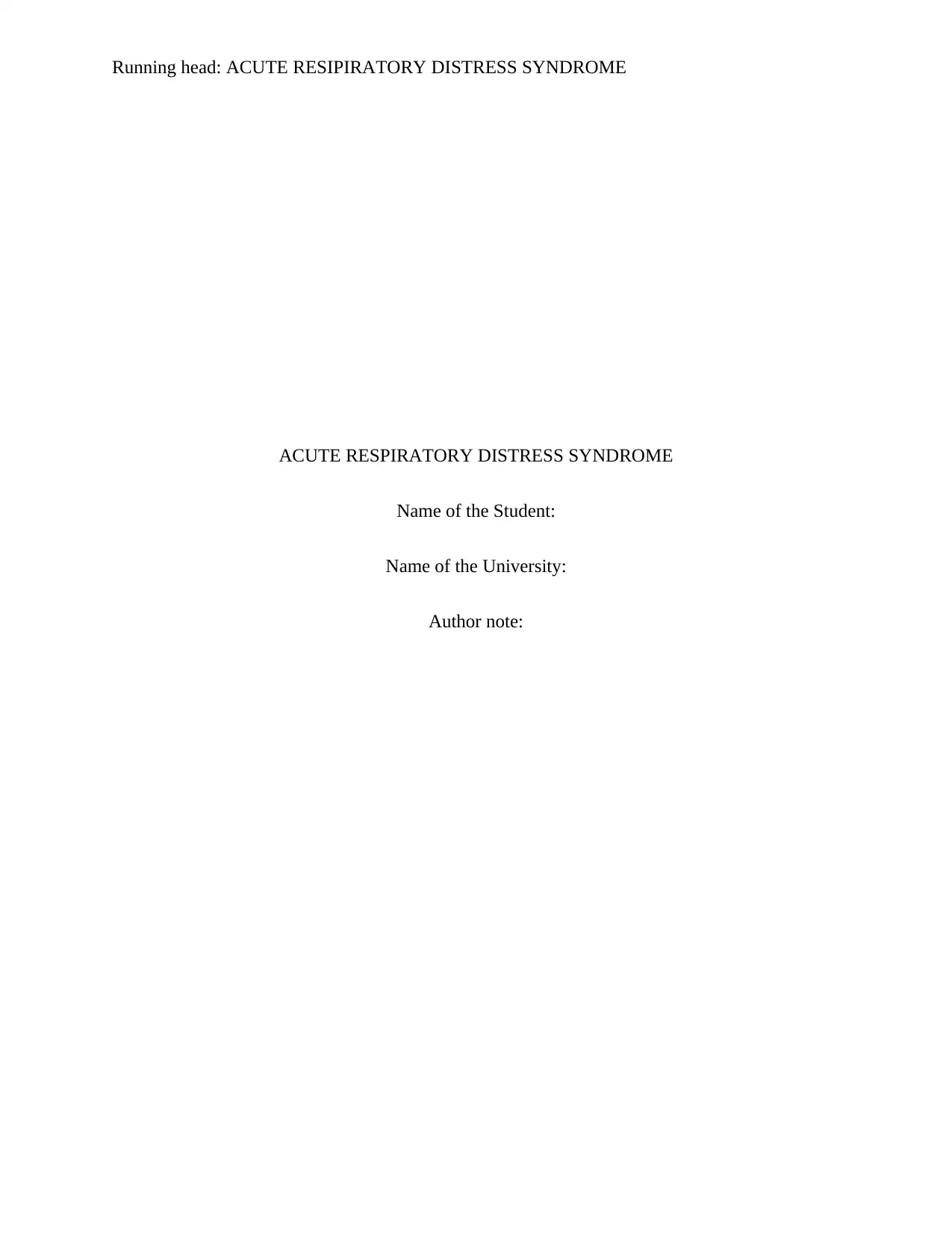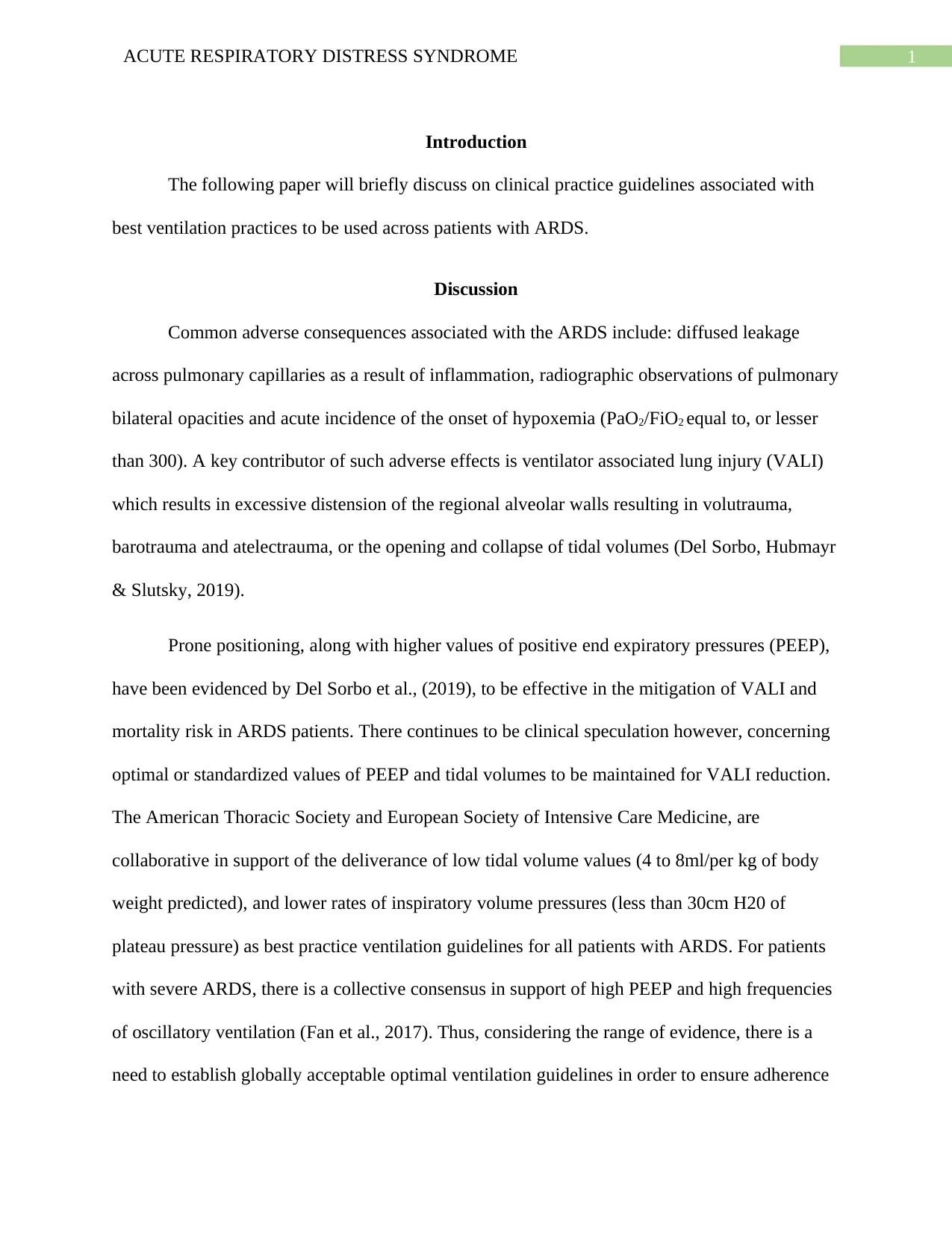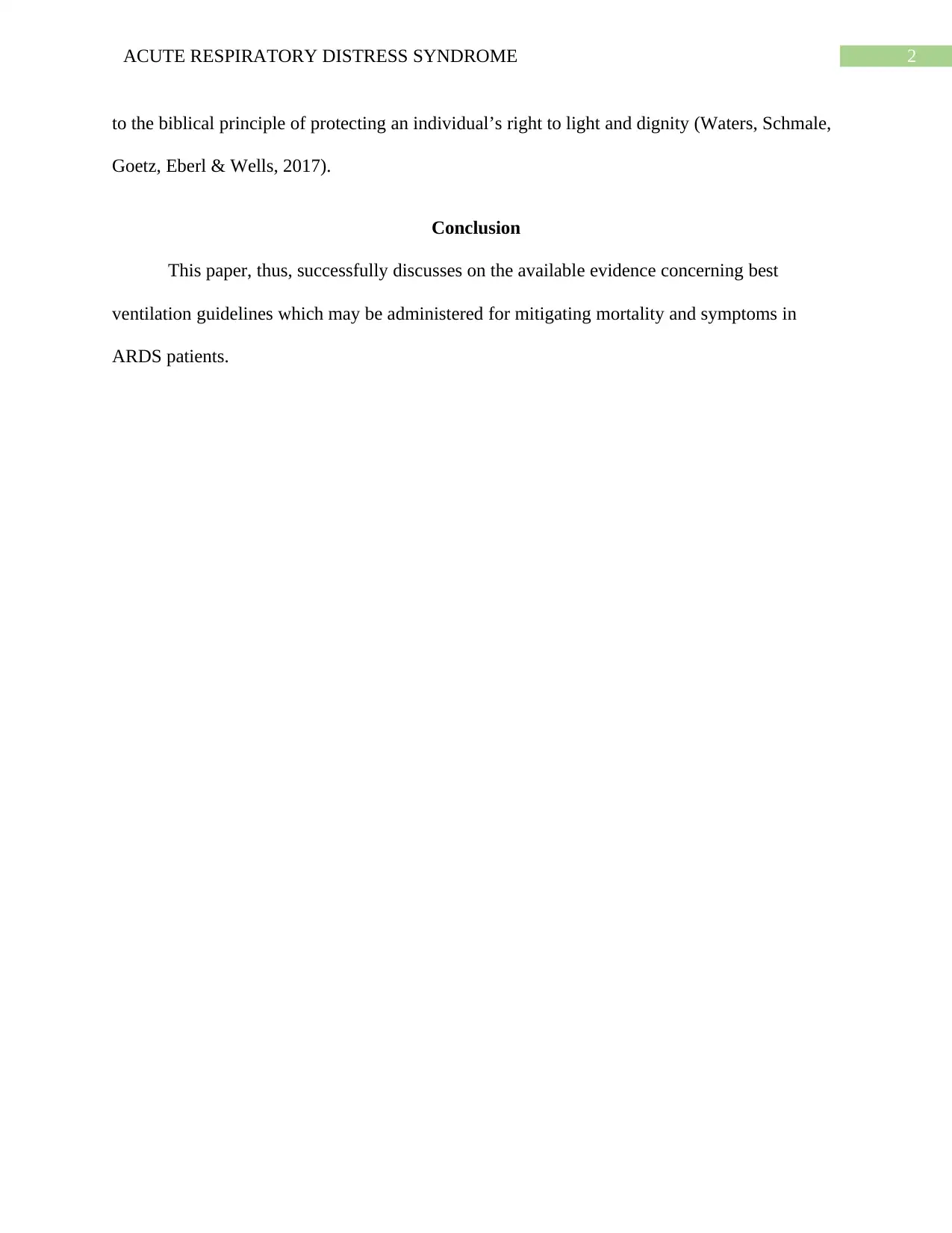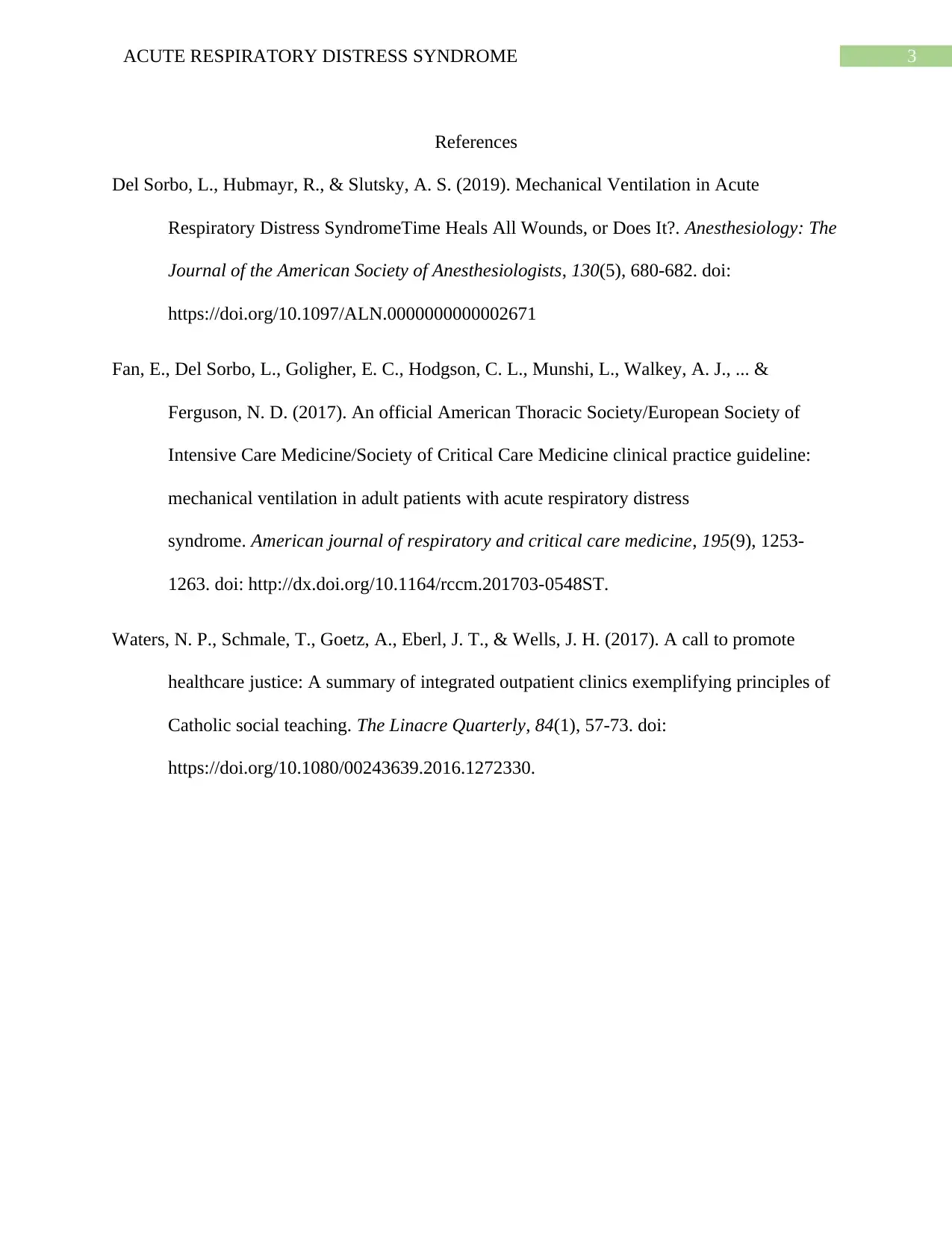Clinical Guidelines: ARDS Ventilation Practices Analysis
VerifiedAdded on 2022/08/26
|4
|607
|10
Report
AI Summary
This report provides a concise overview of the clinical practice guidelines for managing patients with Acute Respiratory Distress Syndrome (ARDS) through mechanical ventilation. It discusses common adverse consequences of ARDS, including inflammation-induced pulmonary capillary leakage, bilateral opacities, and hypoxemia. The report emphasizes the importance of mitigating ventilator-associated lung injury (VALI) through strategies like prone positioning and optimal positive end-expiratory pressure (PEEP) values. It highlights the American Thoracic Society and European Society of Intensive Care Medicine's recommendations for low tidal volumes and lower inspiratory pressures, while also acknowledging the consensus on high PEEP and oscillatory ventilation for severe ARDS cases. The paper concludes by underscoring the need for globally accepted ventilation guidelines to ensure patient care aligns with ethical principles.
1 out of 4






![[object Object]](/_next/static/media/star-bottom.7253800d.svg)